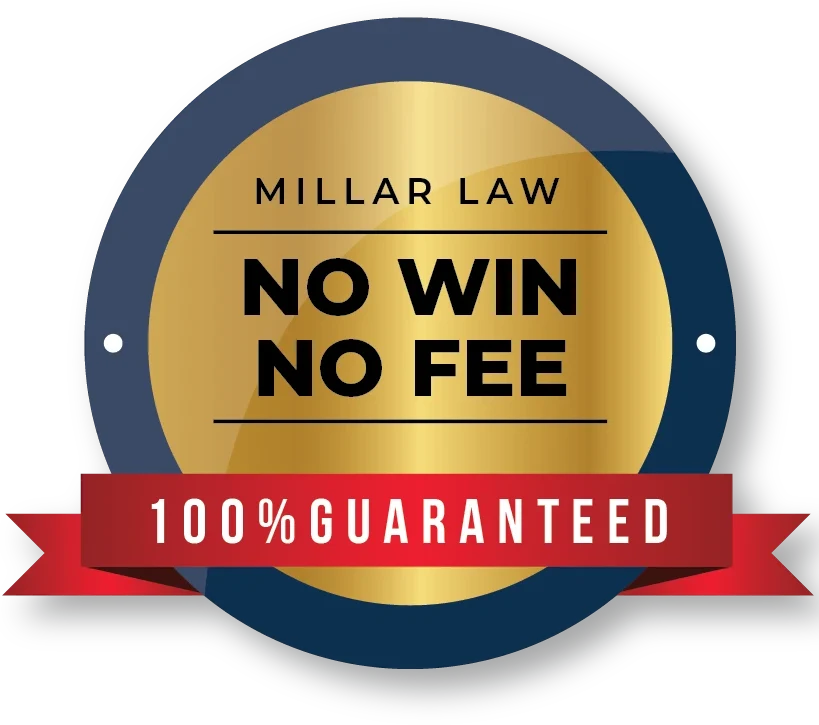How Aggressive Driving Can Increase the Value of Your Georgia Car Accident Case
Key Points:
- In Georgia, aggressive driving is a criminal offense, which can result in large fines and even jail time.
- If you are the victim of an aggressive driver, you may be able to obtain greater compensation and even punitive damages.
- Demonstrating the at-fault party was driving aggressively can be challenging but your attorney can help prove your case.
Table of Contents
What Is Aggressive Driving in Georgia?
Aggressive driving often means moving traffic violations that put other motorists, pedestrians or property at risk. In Georgia, aggressive driving is treated as a serious traffic offense because it often leads to severe accidents, injuries, or even fatalities.
Examples of aggressive driving include:
- Tailgating - following another vehicle too closely
- Excessive speeding - driving significantly above the posted speed limit
- Weaving in and out of traffic - changing lanes frequently and abruptly without signaling
- Ignoring traffic signals and signs - running red lights or stop signs
- Cutting off other vehicles - merging or changing lanes without sufficient space or warning
- Making rude gestures or yelling at other drivers - displaying aggressive behavior toward other motorists
- Flashing headlights excessively - using high beams to harass or intimidate other drivers
- Brake checking - suddenly applying brakes to force a tailgating driver to react
Interesting Facts About Aggressive Driving in Atlanta
Under the laws of Georgia, a driver may be committing offenses that may be considered aggressive driving if he or she drives with the "intent to annoy, harass, intimidate, injure, or obstruct another person."
Because aggressive driving is treated as a serious traffic offense, it can result in fines, license suspension, and even criminal charges. In Georgia, a conviction for aggressive driving is punishable by a fine of up to $1,000, up to 12 months in jail, or both.
Aggressive driving is defined as any combination of two or more of the following:
- Following too closely
- Speeding
- Unsafe or erratic lane changes
- Failure to yield
- Disregarding traffic control devices
Aggressive driving can substantially affect the compensation awarded in a personal injury case in Georgia. Proof of aggressive driving may affect your case in the following ways:
Increased chances of winning your case: If the other driver was aggressive, it may be easier to prove that they were negligent and liable for the accident. This increases your chances of winning your case and getting the compensation you deserve.
Criminal charges: Aggressive driving is a criminal offense in Georgia, and a conviction of the at-fault driver can support your personal injury claim. A guilty plea to an aggressive driving related offense, such as reckless driving, can serve as evidence of the driver's negligence and liability for the accident.
Punitive damages: In Georgia, if the aggressive driver's conduct is found to be malicious, willful, or showing reckless disregard for the safety of others, the injured party may be able to recover punitive damages, over and above normal traditional (also known as compensatory) damages. Punitive damages are levied in order to punish the wrongdoer and deter similar conduct in the future.
Drivers with a history of aggressive driving may also be faced with higher insurance rates and have difficulty obtaining employment where driving is required.
Aggressive driving (Georgia Code § 40-6-397): A person commits the offense of aggressive driving when they operate a motor vehicle with the intent to annoy, harass, molest, intimidate, injure, or obstruct another person. Aggressive driving is usually classified as being a high and aggravated misdemeanor.
Reckless driving (Georgia Code § 40-6-390): A person commits the offense of reckless driving when they drive any vehicle with a willful or wanton disregard for the safety of persons or property. Reckless driving is a misdemeanor in Georgia.
Speeding (Georgia Code § 40-6-181): Driving above the posted speed limit is a violation in Georgia, and excessive speeding can contribute to aggressive driving behavior.
Following too closely (Georgia Code § 40-6-49): Drivers are required to maintain a safe following distance behind the vehicle ahead of them. Tailgating, or following too closely, is a traffic violation in Georgia and can be considered aggressive driving behavior.
Failure to signal (Georgia Code § 40-6-123): Drivers are required to signal their intentions to change lanes, turn, or stop. Failing to signal properly can be seen as aggressive or reckless driving behavior, especially when combined with other traffic offenses.
Improper lane changes (Georgia Code § 40-6-20 and § 40-6-123): Drivers must follow proper procedures when changing lanes or merging into traffic. Making unsafe or abrupt lane changes can be considered aggressive driving behavior.
Failure to obey traffic control devices (Georgia Code § 40-6-20): Drivers are required to obey traffic signals, signs, and other control devices. Ignoring these devices can be a sign of aggressive driving.
Racing (Georgia Code § 40-6-186): Engaging in any form of racing on public roads is illegal in Georgia and is a highly dangerous form of aggressive driving.
How Can a Car Accident Lawyer Prove the At-Fault Driver Was Driving Aggressively?
Evidence of aggressive driving will be used to support your claim and obtain a better settlement or verdict. The best evidence for proving that an at-fault driver was driving aggressively may vary depending on the specific circumstances of the case. However, some types of evidence are generally more persuasive and effective in demonstrating aggressive driving behavior, including:
- Police reports: A police report can be a crucial piece of evidence, especially if the responding officer cited the at-fault driver for aggressive driving. The report may also contain the officer's observations and notes about the driver's behavior at the scene.
- Traffic citations: If the at-fault driver received a traffic citation for aggressive driving, speeding, or another violation that contributed to the accident, these citations, if the at-fault driver pleads guilty or forfeits the bond, can be used as evidence of their negligence.
- Video footage: Video evidence from police officer body worn cameras, surveillance cameras, or dashcams can be particularly useful in showing the at-fault driver's aggressive behavior leading up to the accident. Video footage can provide a clear, objective record of the events and help corroborate witness statements.
- Witness statements: Testimony from witnesses who observed the at-fault driver's aggressive behavior can be valuable in supporting your claim.
- Accident reconstruction expert: An accident reconstruction expert can analyze the physical evidence, such as skid marks, vehicle damage, and debris, to determine the cause of the accident and whether aggressive driving played a role. Their expert opinion can be influential in supporting your claim.
- Photographs: Photographs of the accident scene, vehicle damage, and any visible injuries can help demonstrate the severity of the accident and provide context for the aggressive driving allegations.
What Are the Challenges in Proving Aggressive Driving?
Car accident lawyers can face several challenges when trying to prove that the at-fault driver was driving aggressively.
Because aggressive driving can include a combination of differing traffic offenses, there may not be a particular speed or action that defines it. This ambiguity can make it challenging to indisputably prove that the driver's actions constituted aggressive driving.
Some of the biggest challenges in proving aggressive driving are as follows:
- In a personal injury lawsuit, the burden of proof lies with the injured party to demonstrate that the at-fault driver was negligent and that their negligence caused the accident.
- To prove aggressive driving, lawyers must show that the at-fault driver intended to annoy, harass, molest, intimidate, injure, or obstruct another person. Establishing intent can be difficult, as it requires proving the driver's state of mind at the time of the accident.
- In some cases, it may be difficult to gather evidence of the aggressive driving behavior. When no traffic cam videos or eyewitness statements are available to confirm aggressive driving, it can be more challenging to prove.
- Eye witnesses may have differing accounts of the events leading to the accident. This may weaken the case because it can create inconsistencies in the story. Additionally, witnesses’ memories can fade with time, putting the accuracy of their statements in doubt.
- What one person considers aggressive behavior may not be the same as what someone else thinks. This subjectivity can cloud the facts and make it difficult to establish the at-fault driver's aggressive behavior and/or intent.
Proof of Aggressive Driving Can Lead to Larger Settlement Compensation for Victims
Aggressive driving by the at-fault driver can be considered an aggravating factor, which may lead to increased compensation. However, the outcome of the claim depends on a number of factors, including the circumstances of the case, the strength of the evidence, and the negotiation process.
The following factors can play a role in the ultimate outcome of the claim:
- The severity of the injuries: The more severe the injuries, the higher the potential compensation.
- Negligence or recklessness: If the at-fault driver's aggressive driving behavior shows that they were negligent or reckless, it can be easier to prove that they were at fault for the accident. This can strengthen the injured party's case and lead to a higher settlement.
- Negotiation leverage: Demonstrating that the at-fault driver was driving aggressively can often provide the injured party with additional leverage during settlement negotiations. The insurance company might be convinced to offer a larger settlement to avoid the uncertainty of a trial and associated negative publicity.
- Punitive damages: In some cases where the at-fault driver's behavior was particularly reckless, your lawyer may convince the court to award punitive damages in addition to compensatory damages. While punitive damages are awarded only in exceptional situations, the possibility that such damages might be levied could motivate the insurance company to offer a higher settlement to avoid going to trial.
While an aggressive driving claim can result in a higher settlement, there is no guarantee that it will. Each case is unique, and the outcome depends on the specific facts, evidence, and negotiation strategy. It is wise to work with an experienced personal injury attorney who can evaluate your case, gather necessary evidence, and advocate on your behalf to maximize your compensation.

 1201 West Peachtree Street #2339 Atlanta, GA 30309+1-770-212-3795$0-$100000
1201 West Peachtree Street #2339 Atlanta, GA 30309+1-770-212-3795$0-$100000The staff was friendly and knowledgeable about my situation. Christin was very helpful and answered all of my questions. I would definitely recommend them!

When an Aggressive Driving Accident Claim Is Above Policy Limits
In most cases, insurance companies are only required to pay up to but not over the policy limits of the at-fault driver's insurance coverage. This means that when a car accident settlement or judgment is more than the policy limits, the insurance company will probably not pay the additional amount, even if the at-fault driver was driving aggressively.
In cases like this, the injured party may be required to seek additional compensation directly from the at-fault driver, which can be challenging, especially when the at-fault driver doesn’t have sufficient assets to cover the excess amount. However, there are certain situations where an insurance company might be required by the court to pay above the policy limits including:
- Bad faith claim: When an insurance company can be shown to have acted in bad faith by unreasonably refusing to settle a claim within the policy limits, causing the case to go to trial. If the resulting judgment is above the policy limits, the court may hold the insurance company responsible for the excess amount.
- Umbrella policy: Umbrella policies are designed to provide additional liability protection in case of a significant claim or lawsuit. If the at-fault driver has an umbrella insurance policy, the extra coverage may provide compensation above and beyond the primary policy limits.
- Underinsured motorist coverage: When the at-fault driver’s insurance is not sufficient to cover the damages and the injured party has underinsured motorist coverage (UIM) as part of their insurance package, they may be able to seek additional compensation from their own insurer.
Working with an experienced personal injury attorney can help you maximize the compensation available to you by pursuing all available sources of compensation. Your attorney can also advise you of the best course of action to take if a settlement or judgment exceeds the at-fault driver's insurance policy limits.















